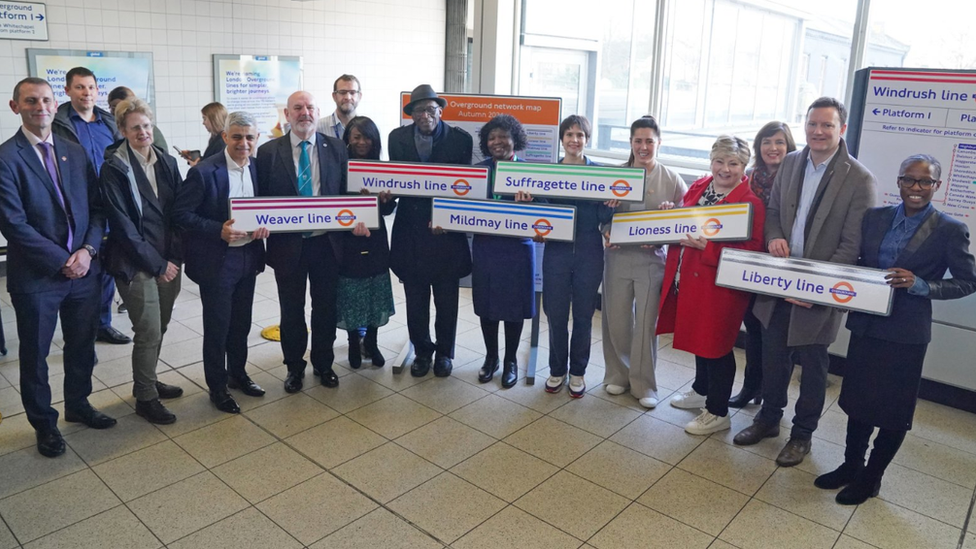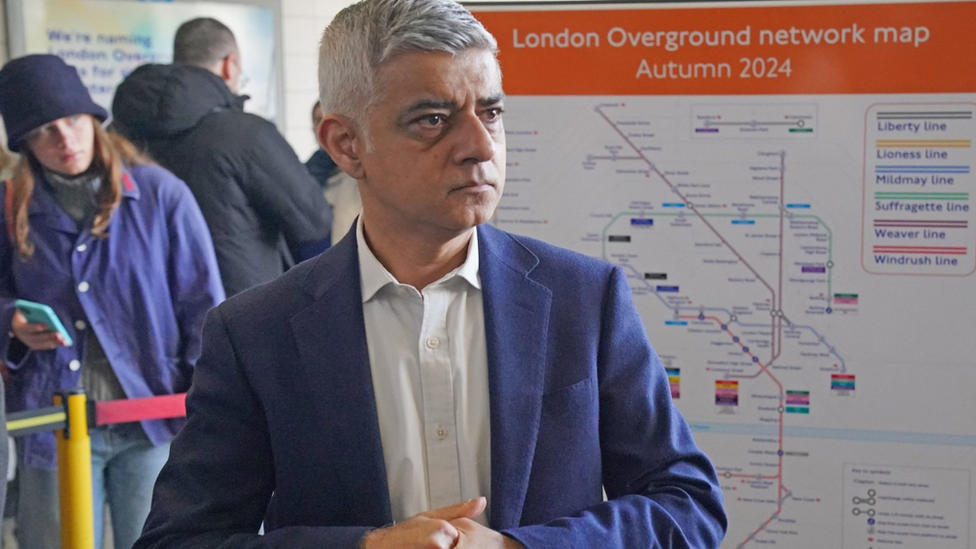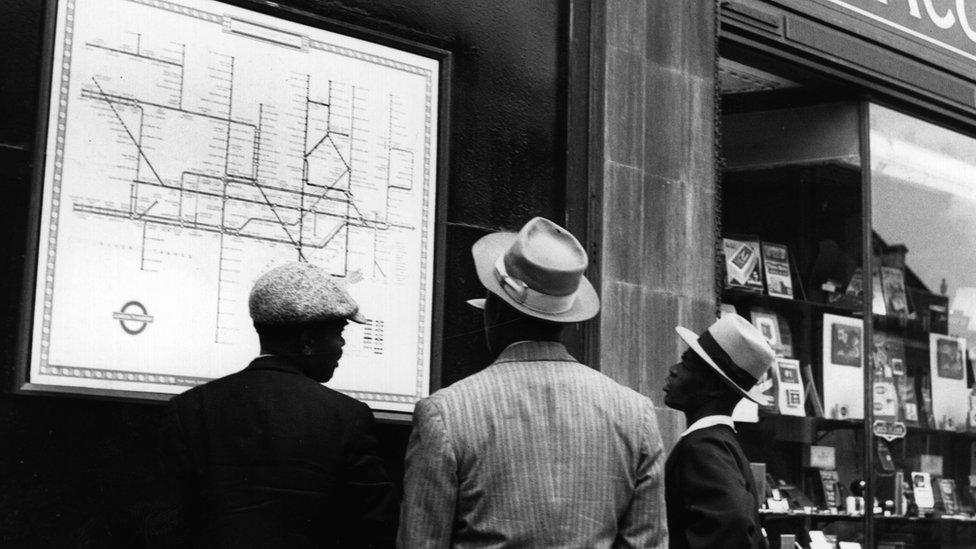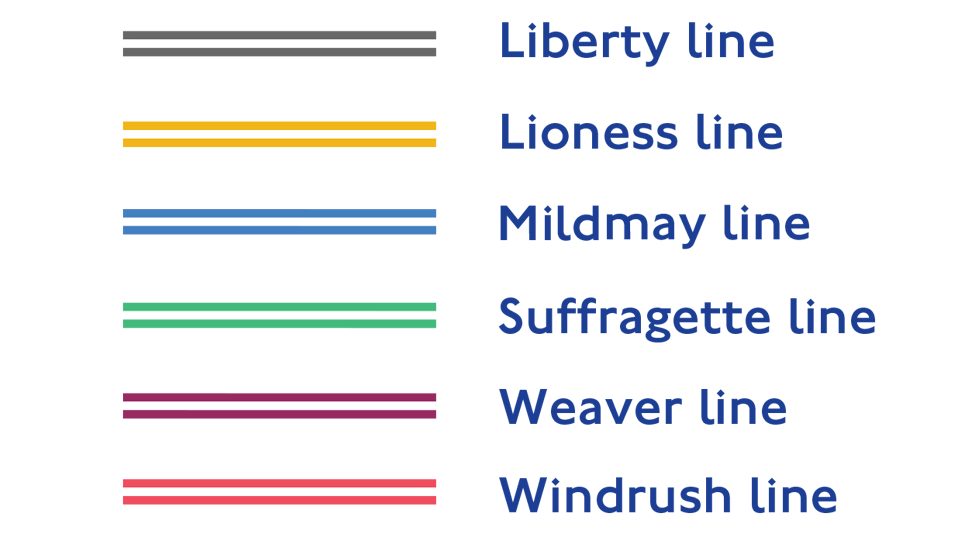London Underground: How the Overground's new names were chosen
- Published

The simplicity of the London Underground map, created in 1933 by Harry Beck, has made it a national icon. On Thursday, Transport for London (TfL) announced a makeover of the map, with new names and colours for its six London Overground lines. The BBC spoke to TfL and a creative agency involved with the project about how the names were chosen.

The London Overground - and its distinctive orange and blue roundel - started running in 2007.
At the moment, its 113-station route orbiting the capital is marked by an orange line, but from autumn this service will be divided and each segment renamed as the Lioness line, the Mildmay line, the Windrush line, the Weaver line, the Suffragette line and the Liberty line.
"This is about telling the stories of London's diverse communities," TfL's Emma Strain tells the BBC. "These names will be in use for decades - so that is a big responsibility."
The project has not been simple, Strain said. TfL had to work out how the lines would fit on the map, what colours to use and had to make sure the names were clearly audible over a tannoy.
"The Lioness line runs in parallel to the Bakerloo line so we needed to be careful there were not two tones of colours which were similar," she said.
The overhaul has been touted for a number of years - Sadiq Khan pledged it in his 2021 Labour mayoral manifesto, external.

Strain, TfL's customer service director, said at the heart of the task of naming each line was making sure it had an identity.
"There is so much history in the Tube we wanted the future to feel commensurate. People will say 'why don't you stick with what you know?'
"The 'east London' or 'north London line' for me would have been a missed opportunity," she said.
The team wanted to discover less well-known parts of history, Strain said.
The Windrush generation were one of those stories the team decided to recognise, with Strain describing them as "part of the fabric of TfL".
"When Windrush communities came to London they came to a number of locations - a number worked for TfL in buses and on London Underground," she said.
"There are many strong ties to Caribbean communities in Dalston Junction, Peckham Rye and West Croydon, which enrich London's community."

A group of Jamaican immigrants new to London scrutinise a map of the Underground
The full longlist of names has not been disclosed, but Strain said names of some influential people were spoken about.
This included designer Althea McNish, who is rumoured to have designed a textile pattern used on the Tube's seats.
Simon Yewdall, strategy director at DNCO, a creative company which helped with the project, said his team spent weeks riding the Overground lines, talking to Londoners, poets, writers and experts on the history of them.
They got "hundreds" of ideas, he said. Londoners had been "more open and brave" than he was anticipating and wanted to celebrate "a greater range of stories and experiences".
"Everyone spoke about a deep pride about London having so many people form different backgrounds and experiences who come together," he said.
"It really warmed my heart."
The ultimate decision to rename the six lines fell to TfL and the Mayor of London.
The revamp is expected to cost £6.3m and has drawn some criticism from Conservatives.
Mayoral candidate Susan Hall called the rebrand "nonsense" and added that she believed Khan had "so many serious issues he needs to get to grip with".
"The Central line is falling apart," she said. "I'm surprised he didn't call one of them the 'Sadiq line'.
"People want to know they can get their trains, people want to feel safe. They don't want to know he is spending goodness knows how much on PR people deciding what to rename things."
While some commuters told the BBC they were pleased, not every one was - you can listen to their range of views below.
Listen: What do Overground commuters think about the new names?
Strain said the money had been split over two annual Greater London Authority (GLA) budgets and that the vast majority would go towards updating customer information.
This includes the redesign and redisplaying of maps across all Tube and London Overground stations and trains, as well as issuing new versions in print and online.
Public address announcements will be re-recorded and around 6,000 station direction signs updated.
Strain called debate about the new names "really interesting and healthy".
"I don't think we were under illusions we would delight everyone. We have nine million people in London. It is diverse and that's what makes it brilliant," she said.

What are the London Overground new line names?
Lioness line

Yellow parallel lines: Running through Wembley, the name is to honour the achievements of the England women's football team.
Mildmay line

Blue parallel lines: It has been named after the small charitable hospital in Shoreditch, which played an important role during the HIV/Aids crisis in the 1980s.
Windrush line

Red parallel lines: Running through several areas with strong ties to Caribbean communities, including Dalston Junction, Peckham Rye and West Croydon, it has been named to honour the Windrush community.
Weaver line

Maroon parallel lines: With stops including Liverpool Street, Spitalfields, Bethnal Green and Hackney, the route travels through several areas of London known for their importance in the textile trade.
Suffragette line

Green parallel lines: Named to celebrate how London's East End working-class community fought for women's rights, the line also runs to Barking, home of the longest-surviving suffragette, Annie Huggett, who died aged 103.
Liberty line

Grey parallel lines: According to TfL, it is named "to reference the historical independence of the people of the borough of Havering", through which it runs, as well as the celebrating "a defining feature of London".
Related topics
- Published15 February 2024

- Published21 June 2018
